Related Research Articles
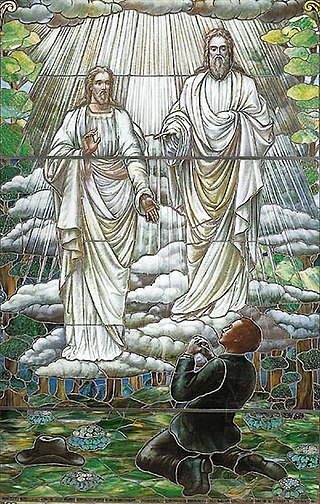
The First Vision refers to a theophany which Latter Day Saints believe Joseph Smith experienced in the early 1820s, in a wooded area in Manchester, New York, called the Sacred Grove. Smith described it as a vision in which he received instruction from God the Father and Jesus Christ.

The Church of Christ was the original name of the Latter Day Saint church founded by Joseph Smith. Organized informally in 1829 in upstate New York and then formally on April 6, 1830, it was the first organization to implement the principles found in Smith's newly published Book of Mormon, and thus its establishment represents the formal beginning of the Latter Day Saint movement. Later names for this organization included the Church of the Latter Day Saints, the Church of Jesus Christ, the Church of God, the Church of Christ of Latter Day Saints, and the Church of Jesus Christ of Latter Day Saints.
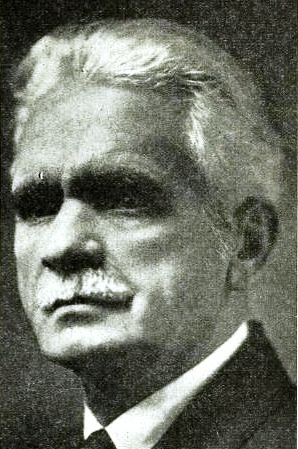
Brigham Henry Roberts was a historian, politician, and leader in the Church of Jesus Christ of Latter-day Saints. He edited the seven-volume History of the Church of Jesus Christ of Latter-day Saints and independently wrote the six-volume Comprehensive History of the Church of Jesus Christ of Latter-day Saints. Roberts also wrote Studies of the Book of Mormon—published posthumously—which discussed the validity of the Book of Mormon as an ancient record. Roberts was denied a seat as a member of United States Congress because of his practice of polygamy.
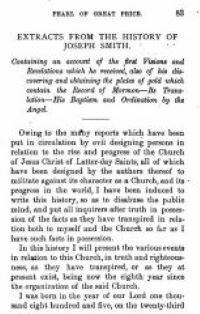
Joseph Smith–History is a book in the Pearl of Great Price containing excerpts from an autobiographical record of some of the early events in the life of Joseph Smith, the founder of the Latter Day Saint movement. Like many of Smith's publications, it was dictated to scribes.

William Wines Phelps was an early leader of the Latter Day Saint movement. He printed the first edition of the Book of Commandments that became a standard work of the church and wrote numerous hymns, some of which are included in the current version of the Church of Jesus Christ of Latter-day Saints' hymnal. He was at times both close to and at odds with church leadership. He testified against Joseph Smith, providing evidence that helped persuade authorities to arrest Smith. He was excommunicated three times and rejoined the church each time. He was a ghostwriter for Smith. Phelps was called by Smith to serve as assistant president of the church in Missouri and as a member of the Council of Fifty. After Smith's death, Phelps supported Brigham Young, who was the church's new president.

William H. Clayton was a clerk, scribe, and friend to the religious leader Joseph Smith. Clayton, born in England, was also an American pioneer journalist, inventor, lyricist, and musician. He joined the Church of Jesus Christ of Latter Day Saints in 1837 and served as the second counselor to the British mission president Joseph Fielding while proselyting in Manchester. He led a group of British converts in emigrating to the United States in 1840 and eventually settled in Nauvoo, Illinois, where he befriended Joseph Smith and became his clerk and scribe. He was a member of the Council of Fifty and Smith's private prayer circle.

There are many works relating to Joseph Smith. These works cover Joseph Smith's his life, legacy, and teachings. Smith is the author of several works of scripture, and several personal histories, letters, and other writings. There have also been several biographies written about him.

Joseph Smith, the founder and leader of the Latter Day Saint movement, and his brother, Hyrum Smith, were killed by a mob in Carthage, Illinois, United States, on June 27, 1844, while awaiting trial in the town jail.
In the Latter Day Saint movement, the Quorum of the Twelve is one of the governing bodies of the church hierarchy organized by the movement's founder Joseph Smith and patterned after the Apostles of Jesus. Members are called Apostles, with a special calling to be evangelistic ambassadors to the world.
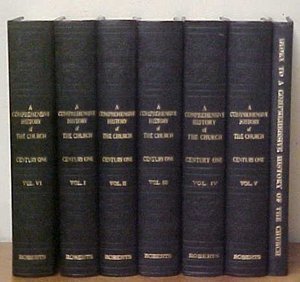
A Comprehensive History of The Church of Jesus Christ of Latter-day Saints: Century I is a six-volume history published in 1930 and written by B.H. Roberts, a general authority and Assistant Church Historian of the Church of Jesus Christ of Latter-day Saints. It should not be confused with the seven-volume History of the Church of Jesus Christ of Latter-day Saints, which was also produced by Roberts in the early 20th-century but as an editor and which focused on the history of Joseph Smith.

Phineas Howe Young was a prominent early convert in the Latter Day Saint movement and was later a Mormon pioneer and a missionary for the Church of Jesus Christ of Latter-day Saints. Phineas Young was an older brother of Brigham Young, who was the president of the LDS Church and the first governor of the Territory of Utah.
Sylvester Marshall Smith was an early leader in the Latter Day Saint movement and one of the inaugural seven Presidents of the Seventy.
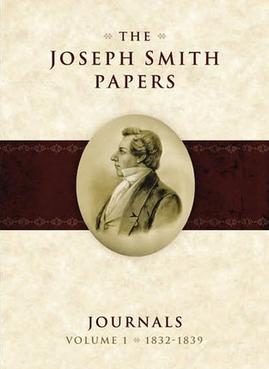
The Joseph Smith Papers is a documentary editing project to collect, research, and publish all documents created by, or under the direction of, Joseph Smith (1805-1844), the founder of the Latter Day Saint movement. Documents are published online alongside transcriptions and annotations, with selections also published in 27 printed volumes.

Alexander Neibaur was the first dentist to practice in Utah and the first Jew to join the Latter Day Saint movement. He was educated for the profession at the University of Berlin and was a skilled dentist before the establishment of dental schools in America. He was fluent in 7 languages and as many dialects.
Dean Cornell Jessee is a historian of the early Latter Day Saint movement and leading expert on the writings of Joseph Smith Jr.
In the theology of the Latter Day Saint movement, an endowment refers to a gift of "power from on high", typically associated with the ordinances performed in Latter Day Saint temples. The purpose and meaning of the endowment varied during the life of movement founder Joseph Smith. The term has referred to many such gifts of heavenly power, including the confirmation ritual, the institution of the High Priesthood in 1831, events and rituals occurring in the Kirtland Temple in the mid-1830s, and an elaborate ritual performed in the Nauvoo Temple in the 1840s.
This is a bibliography of works on the Latter Day Saint movement.
References
- Jessee, Dean C. (1976), "The Reliability of Joseph Smith's History", Journal of Mormon History , 3: 23–46.
- Roberts, B. H., ed. (1902), History of the Church of Jesus Christ of Latter-day Saints, vol. 1, Salt Lake City: Deseret News, OCLC 4890306 .
- Roberts, B. H., ed. (1904), History of the Church of Jesus Christ of Latter-day Saints, vol. 2, Salt Lake City: Deseret News .
- Roberts, B. H., ed. (1905), History of the Church of Jesus Christ of Latter-day Saints, vol. 3, Salt Lake City: Deseret News .
- Roberts, B. H., ed. (1908), History of the Church of Jesus Christ of Latter-day Saints, vol. 4, Salt Lake City: Deseret News .
- Roberts, B. H., ed. (1909), History of the Church of Jesus Christ of Latter-day Saints, vol. 5, Salt Lake City: Deseret News .
- Roberts, B. H., ed. (1912), History of the Church of Jesus Christ of Latter-day Saints, vol. 6, Salt Lake City: Deseret News .
- Roberts, B. H., ed. (1932), History of the Church of Jesus Christ of Latter-day Saints, vol. 7, Salt Lake City: Deseret News .